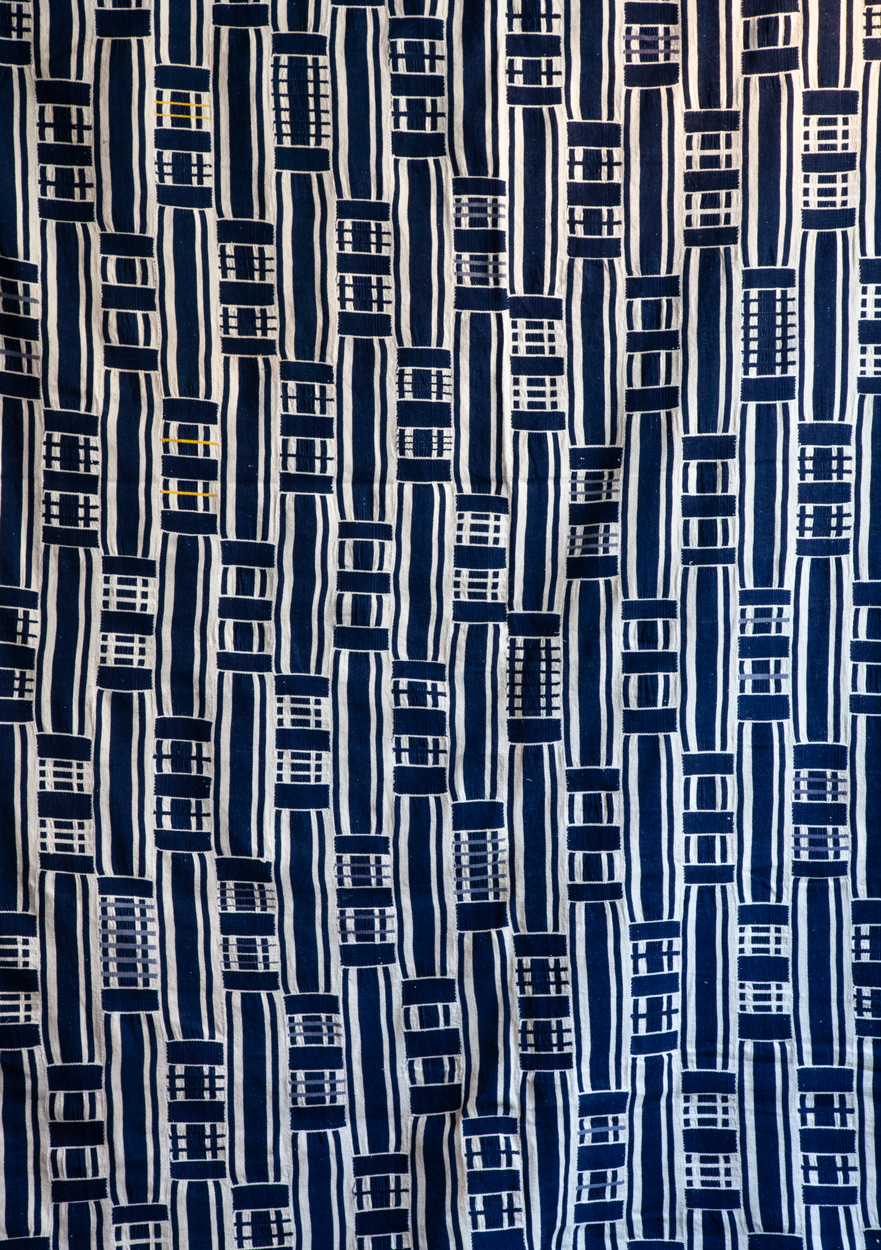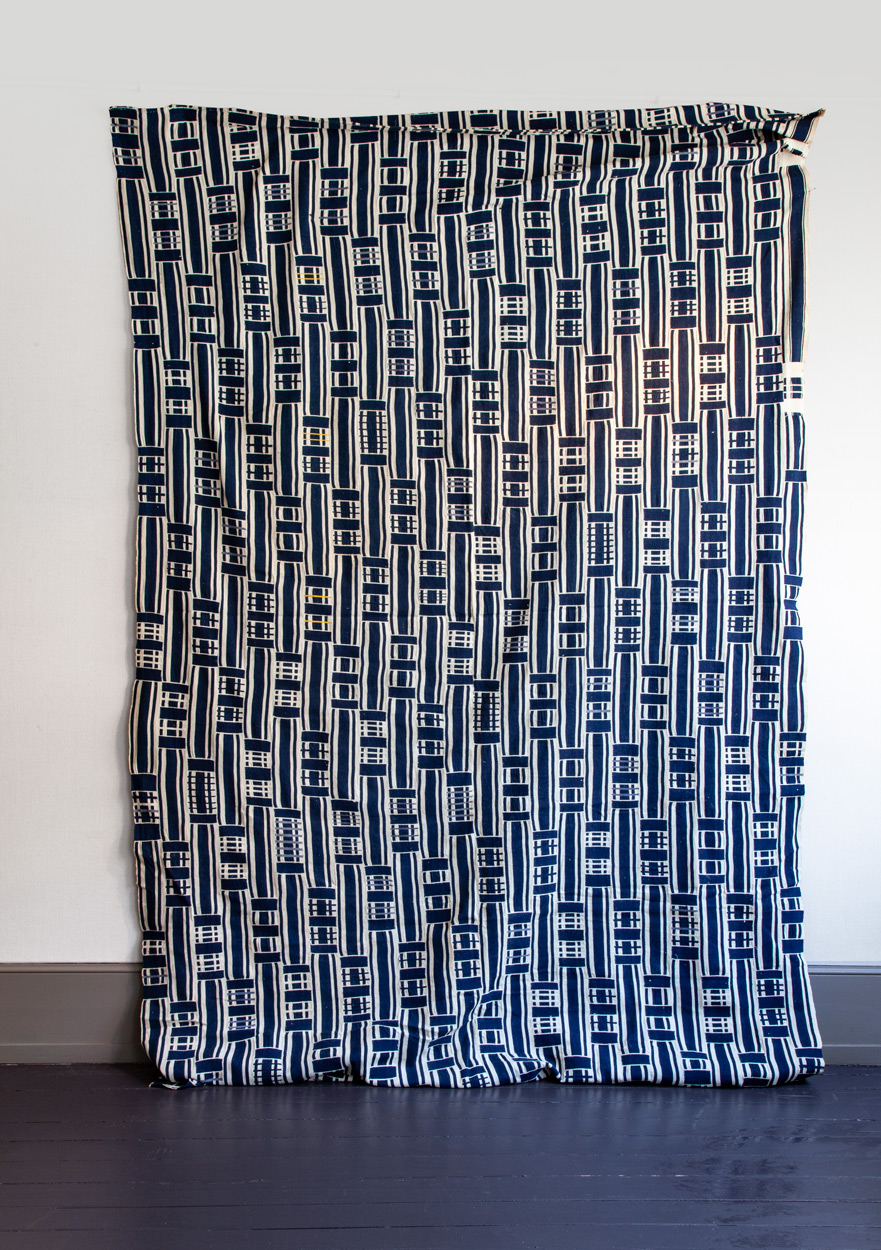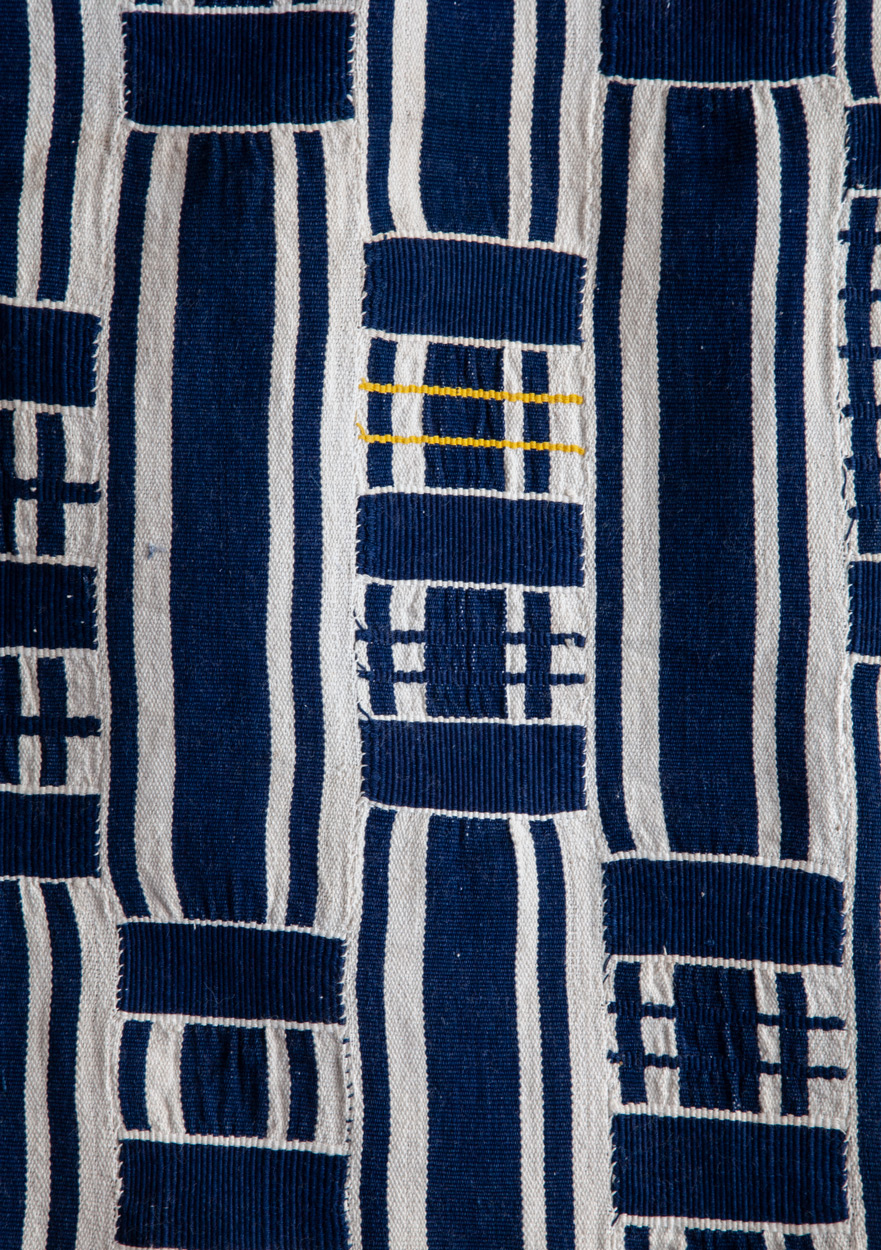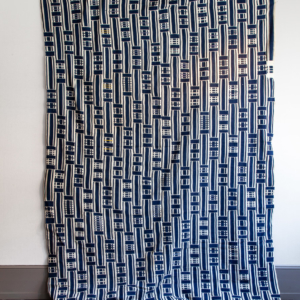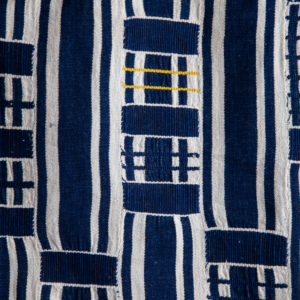Ancestral expertise
Ewe weaving / kita cloths
Ewe weavers are considered to be the most talented in West Africa. Their clothing, known as kita or kente, can be found in Togo and Benin but is most common in Ghana, where it is worn by almost all of the country’s various tribes.
While the Ewe traditionally opt for strips of cotton for this type of weaving, they may also use silk. Kita cloths were originally worn by chiefs and elders and featured various motifs on the flowing, woven trains such as knives, hands, keys, musical instruments and the chief’s fly-swatter, with each have a proverbial reference.
It is only men who weave these cloths. They sit at wooden looms using pedals to operate two pairs of heald shafts, with any flowing trains added by hand. The craftsmen often base their creations on a design drawn on paper.
One of the unique characteristics of kita cloths is the use of thread of two or more different hues woven together, to give the garment a multicoloured look.
Receive our newsletter
